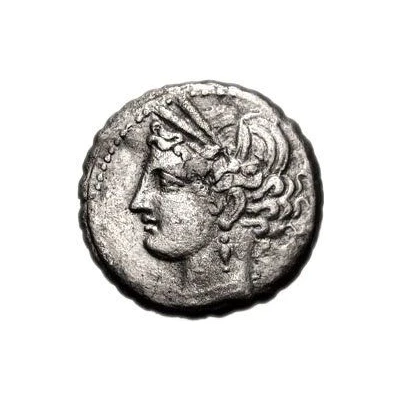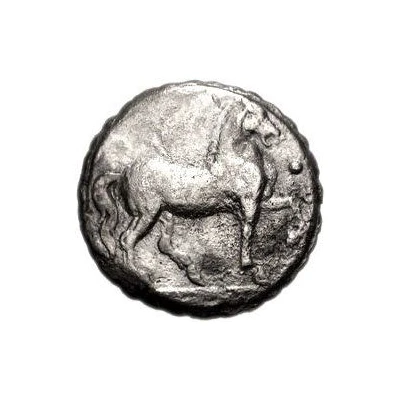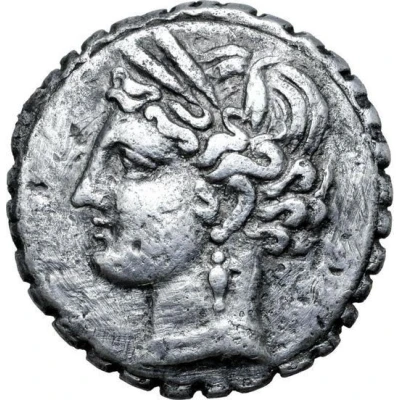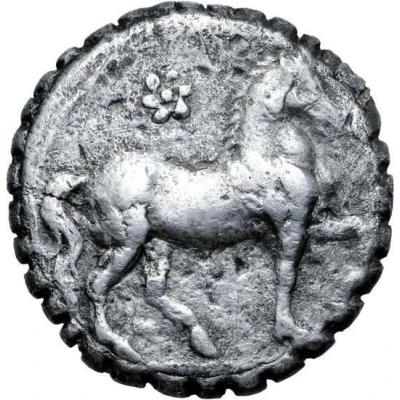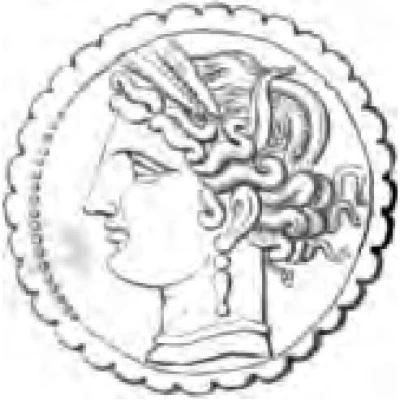
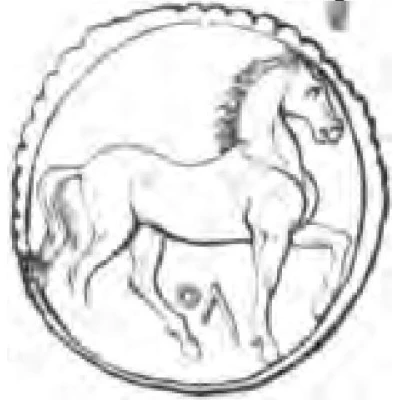

© Numismatique de l'ancienne Afrique / Volume 2. Les monnaies de la Syrtique, de la Byzacène et de la Zeugitane
Dishekel 200 BC - 146 BC
| Silver | 13.1 g | 25 mm |
| Issuer | Carthage (Zeugitana) |
|---|---|
| Type | Standard circulation coin |
| Years | 200 BC - 146 BC |
| Value | 2 Shekels |
| Currency | Shekel |
| Composition | Silver |
| Weight | 13.1 g |
| Diameter | 25 mm |
| Shape | Round (irregular) |
| Technique | Hammered |
| Demonetized | Yes |
| Updated | 2024-10-09 |
| Numista | N#333091 |
|---|---|
| Rarity index | 100% |
Reverse
Horse standing right, left foreleg raised; Punic letters between legs.
Script: Neo-Punic
Lettering: 𐤂𐤏
Interesting fact
The Dishekel coin was used as a form of currency in the ancient city of Carthage, which was located in present-day Tunisia. The coin was made of silver and weighed 13.1 grams, which was a significant amount for a coin at that time. Despite its weight, the Dishekel coin was widely used in trade and commerce throughout the Mediterranean region. Its design featured a depiction of the goddess Tanit, who was an important deity in the Carthaginian pantheon, and the coin's value was equivalent to a quarter of a shekel, which was a common unit of currency in the ancient world. The Dishekel coin is a valuable piece of history that provides insight into the economic and cultural practices of ancient Carthage.
